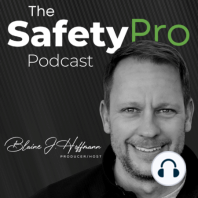15 min listen

053: How to Handle OSHA Safety Inspections
053: How to Handle OSHA Safety Inspections
ratings:
Length:
47 minutes
Released:
Dec 5, 2018
Format:
Podcast episode
Description
Powered by iReportSource In this episode, I will talk about preparing for an OSHA inspection and how to best handle the event should one occur. Here, my focus will be what to do up-front, and should a compliance safety and health officer (CSHO) arrive at your facility, what to expect and what you should have ready to make it go smoother. I will also talk briefly about how to handle any alleged violation and potential citations that come your way. Let’s first get some definitions out of the way: I already mentioned the CSHO (Compliance Safety and Health Officer): This is the federal OSHA employee who conducts inspections for the agency — a.k.a. “OSHA Inspector.” General Duty Clause (GDC): A section of the OSH Act — Section 5(a)(1) — that requires employers to protect employees from recognized, serious hazards, regardless of whether there is a specific standard addressing that hazard. OSHA often uses the GDC to cite employers for not protecting workers from ergonomic-type risks, workplace violence, and heat stress. OSHA: The Occupational Safety and Health Administration — the federal agency that sets and enforces worker safety and health laws. OSH Act: The Occupational Safety and Health Act of 1970, which is the enabling legislation for OSHA. Repeat violation: A hazardous/violative condition that is the same or similar to a previously cited condition in the past five years at either the same establishment or another establishment of the same company under federal OSHA jurisdiction. Serious violation: A violation where there is a substantial probability that death or serious physical harm could result, and the employer knew or should have known of the hazard. Willful violation: A violation that the employer intentionally and knowingly commits. Now let’s get into the arrival and inspection process and how to best handle these and ultimately what you can do to prepare your company better. Understand that OSHA has the right to inspect places of work. A question I get more often than I am comfortable with is whether or not you can require OSHA to come back with a warrant. Yes, employers may exercise their Constitutional rights to request a warrant; however, there is a relatively low threshold for OSHA to obtain such approval - so this is not advised in many cases and will not show your willingness to cooperate. Instead, use your right to an opening conference upon their arrival. Pro Tip: When the compliance officer arrives, avoid showing a negative attitude. Creating a wrong first impression could set up your facility for failure, so practice having a positive attitude towards the compliance officer. Being polite can put the inspector at ease and create a positive environment—you might even enjoy the inspection. Know the reasons that prompt most inspections. Inspections can be triggered in a variety of ways, such as reports of serious injuries, complaints, targeting/emphasis programs, and plain-view hazards. They are seldom at random. Note that some smaller workplaces in low-hazard industries may be exempt from certain types of inspections. See CPL 02-00-051-Enforcement exemptions and limitations under the Appropriations Act. Know the phases of an OSHA inspection. Inspections will consist of an opening conference, records review, walkthrough inspection, and closing conference. Citations will not be issued during the inspection; those come later from the Area Office director. Verify CSHO’s credentials. Always ask to see the CSHO credentials upon arrival. You can also contact the area office to verify their identity if needed. Get a clear understanding of the proposed scope of an inspection. CSHO’s should generally stick to that scope. This means, what do they want to see? A specific process, part of the facility, program review, etc. Which tells you exactly how to narrow the visit - where to take them and where NOT to take them! Have documents ready. The OSHA Compliance Officer will look for documentation including but not limited t
Released:
Dec 5, 2018
Format:
Podcast episode
Titles in the series (100)
005: Safety Questions from Listeners: Rail Car Fall Protection| Wheel Chocks | Confined Space Safety by The Safety Pro Podcast